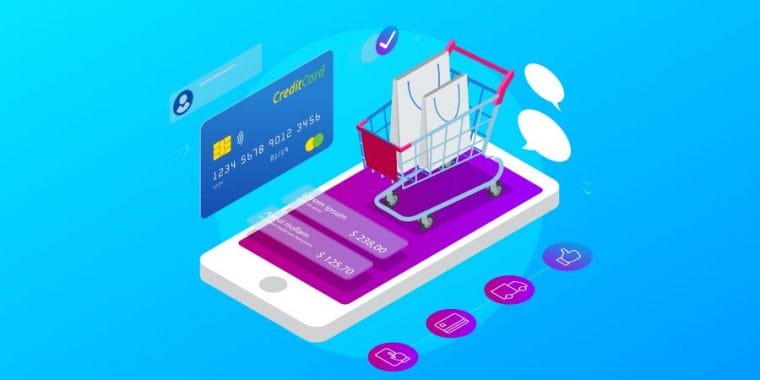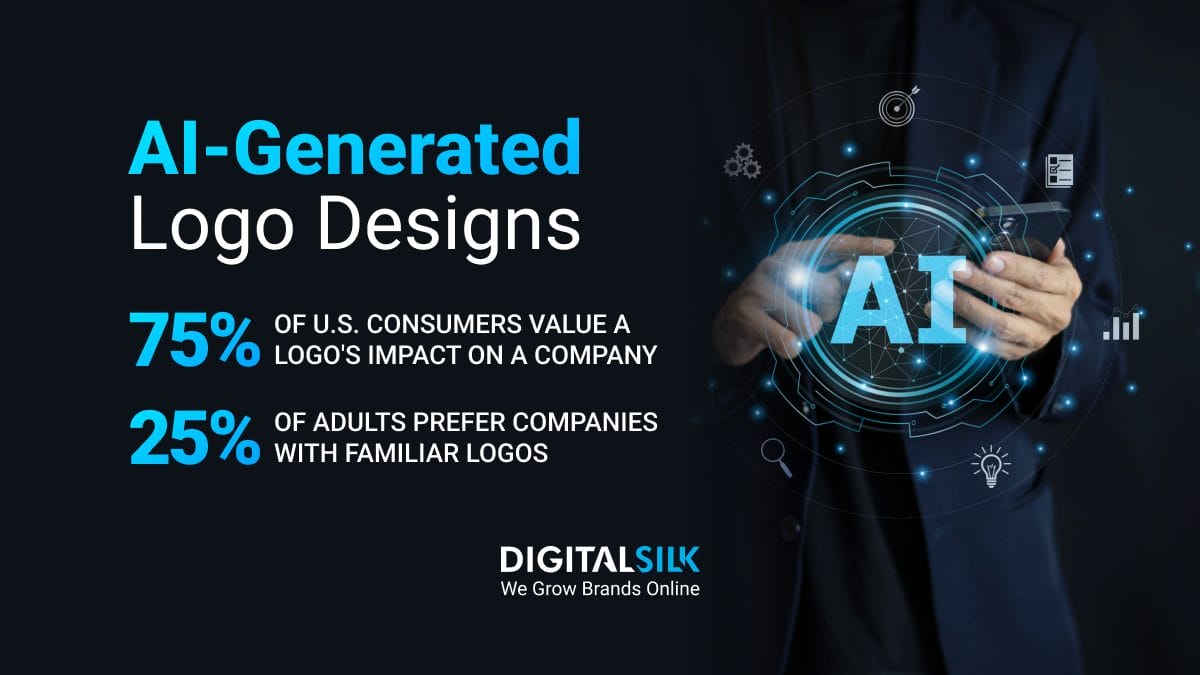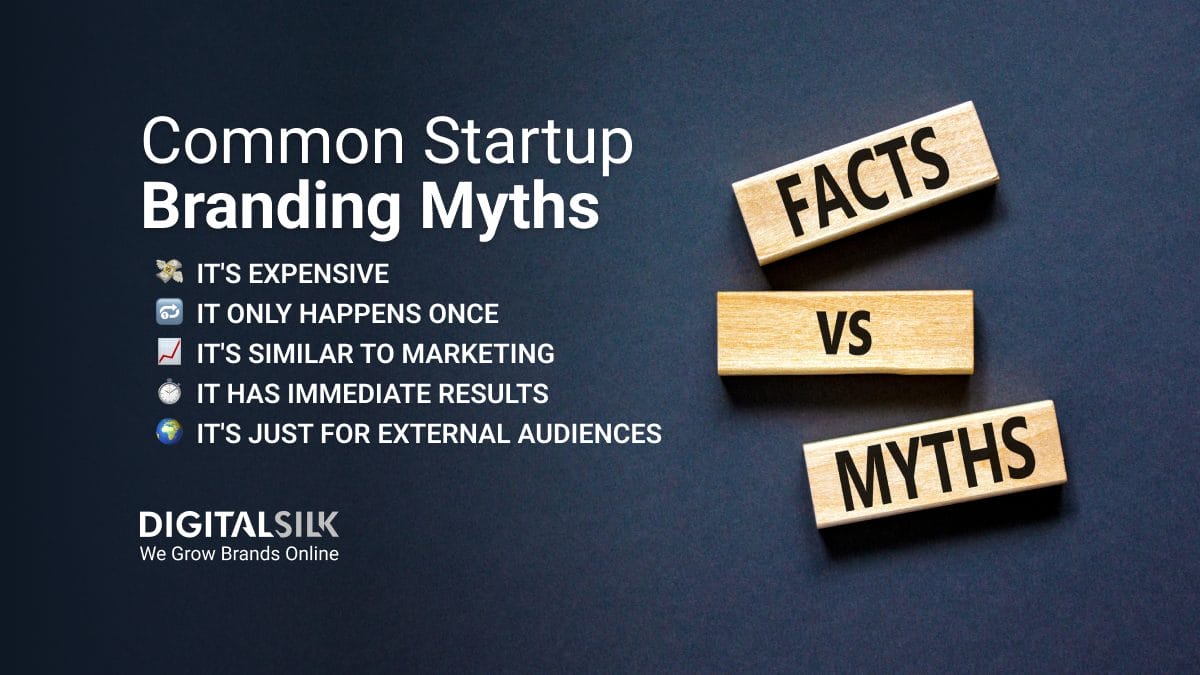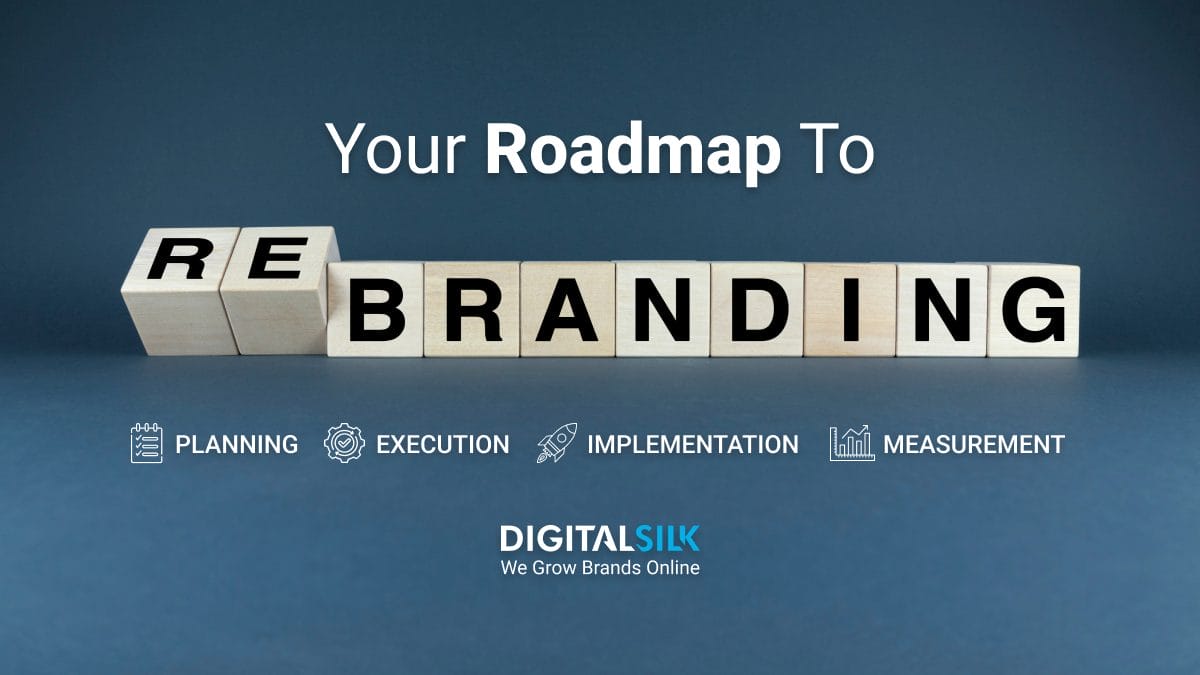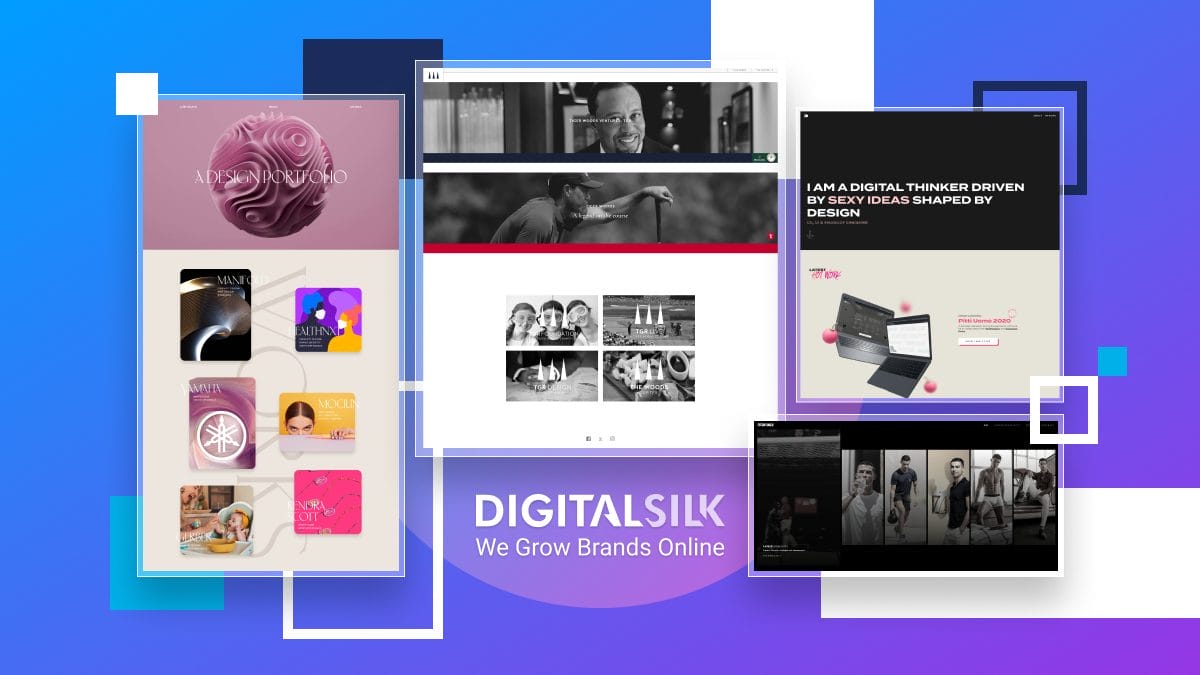Online shopping has gained a lot of traction in the digital age, with people jumping on the eCommerce bandwagon to experience the convenience and versatility it offers.
With a sizable 20.01% of global retail sales happening through eCommerce websites, it’s no surprise that more and more businesses want to take advantage of this burgeoning platform type.
In this post, we’ll cover the basics of eCommerce websites and explore various types on the market today.
What Is An eCommerce Website?
An eCommerce website is an online platform that businesses use to sell products or services to consumers. It allows users to browse and make purchases without visiting a physical store.
Designing an eCommerce website comes with a bit of a learning curve, and you need to play your cards right to boost sales and reach a wider audience.
Most sites store user information in a database — including names, addresses and billing information — to streamline order processing and improve website ranking.
Since these online stores process sensitive information, you should integrate payment gateways into the purchase funnel to securely store and transfer card data.
Next, you should integrate shipping and logistics solutions to deliver packages in a timely manner after users complete the order.
Finally, you need to create a positive customer experience through clear return and exchange policies, FAQ pages, detailed order information and prompt user assistance. This helps with brand awareness, client acquisition and long-term retention.
How Can eCommerce Websites Drive Revenue?
When starting your eCommerce business, you should decide on one or more suitable revenue streams. Since selling goods or services is at the heart of your store, you should consider the following revenue models:
- Dropshipping: This is when the e-Store acts as the middleman between the consumer or supplier — you don’t make or own any of the products listed, you just sell them on your website for a certain commission.
- Affiliate Marketing: You can partner with other websites or businesses to promote your products and services and earn a cut from each sale through the respective referral.
- Subscriptions: Your website could offer subscription-based services — such as monthly product boxes or access to exclusive deals and content — in exchange for a recurring fee.
- Private Labelling: This includes businesses or individuals that carry out all pre-sale stages in-house, including production, packaging and selling the items to end consumers.
- White Labelling: You can purchase goods directly from manufacturers, rebrand and repackage them so you can distribute and sell them under your brand name.
- Wholesaling: Your e-Store could serve as a direct link between manufacturers and retailers, selling products in bulk for a slightly higher price than your initial transaction.
- Renting and Loaning: Your customers could pay for using your products or services, rather than full-on purchasing them. They can pay a small fee to use them for a set period before returning them.
- Freemium: Frequently part of digital services or products, a freemium gives consumers a choice between a free and a paid version. In most cases, users can stay on the free plan indefinitely but would have to upgrade to premium for extra features.
The revenue stream you go for depends on your target market, allocated resources and overall business plan. You should review and adapt your revenue streams regularly to accommodate the ever-changing eCommerce scene.
Types Of eCommerce Websites By Business Model
How well you grow your eCommerce online shop depends on your business model, which determines the buyer and seller in a given transaction.
Business-To-Business (B2B)
As the name suggests, B2B stores involve transactions between two businesses — manufacturers and wholesalers or wholesalers and retailers — through an online platform.
This model typically involves large product quantities or long-term service contracts between the two parties. It’s one of the fastest-growing eCommerce sales models, with estimates exceeding $10 billion in volume in the U.S.
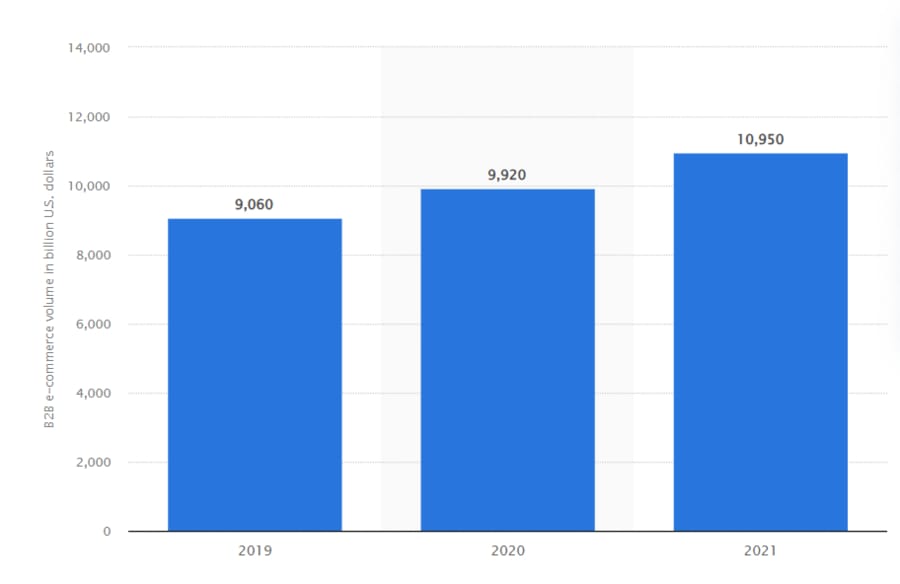
B2B allows businesses to connect with relevant distributors and suppliers through a digital platform, which could bring several benefits:
- Automated processes in sales on both ends
- Minimal infrastructure and overhead costs
- Better growth opportunities
- No need for intermediaries
- Better productivity and partner relationships
Take Printful for example — an on-demand printing service that allows businesses to place custom orders like branded shirts or mugs.
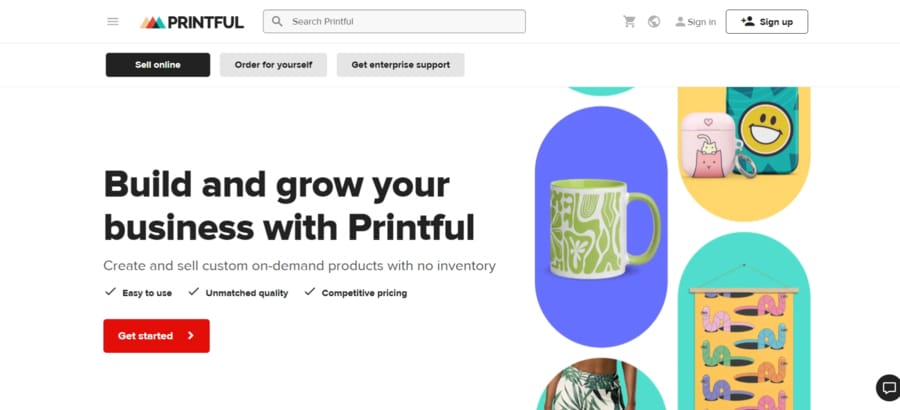
Back in the day, merchandise design would put a significant dent in the startup marketing budget, so Printful bridges this gap by democratizing the industry and only charging businesses for fulfillment and shipping once your orders arrive.
The website can even sell your custom merchandise both domestically and internationally, which boosts your growth potential and brand recognition.
Business-To-Consumer (B2C)
Perhaps the most widely recognized model, B2C refers to transactions between businesses and consumers.
It includes all e-Stores that sell goods directly to their target demographic and boasts the following benefits:
- Lower prices due to the lack of third parties involved
- Wider global reach compared to physical stores
- Advanced marketing strategies based on user data
Fashion retailers such as Nordstrom are a perfect example of B2C models.
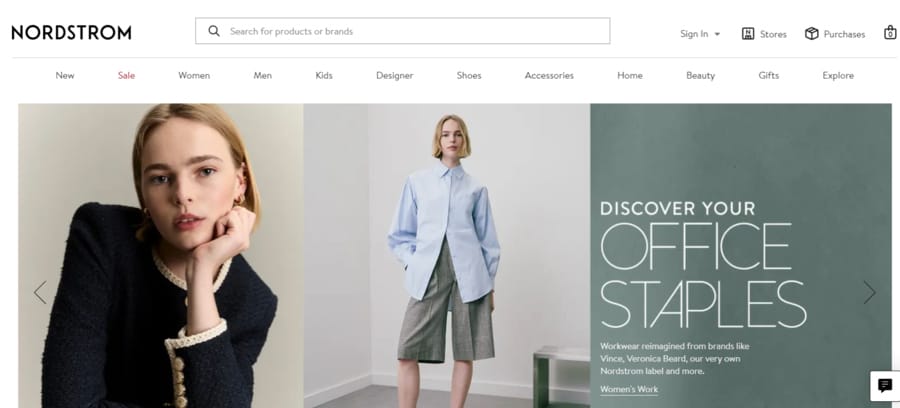
As a high-end department store with a strong online presence, it gives users the chance to browse the collection and place orders at their convenience.
The brand includes detailed product descriptions and easy checkout processes for a seamless shopping experience.
Consumer-To-Consumer (C2C)
The next business model is based on consumer-to-consumer transactions, with businesses having no direct involvement. It’s quite a casual scenario — think Facebook Marketplace, Amazon or eBay listings.
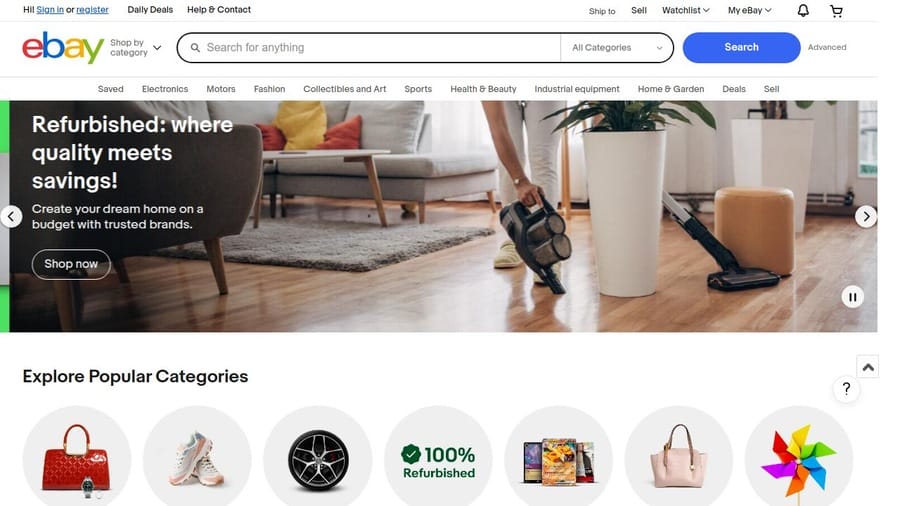
This easily accessible and convenient way to buy and sell goods has a handful of perks:
- Turning unused items into consumer profit
- Reaching a wider customer base
- Using an “umbrella” platform to build individual credibility
Consumer-To-Business (C2B)
Acting as individual entrepreneurs, consumers can offer goods or services to businesses.
Prime examples include freelance marketplaces such as Upwork or Fiverr, where users can offer their skills to businesses in need.
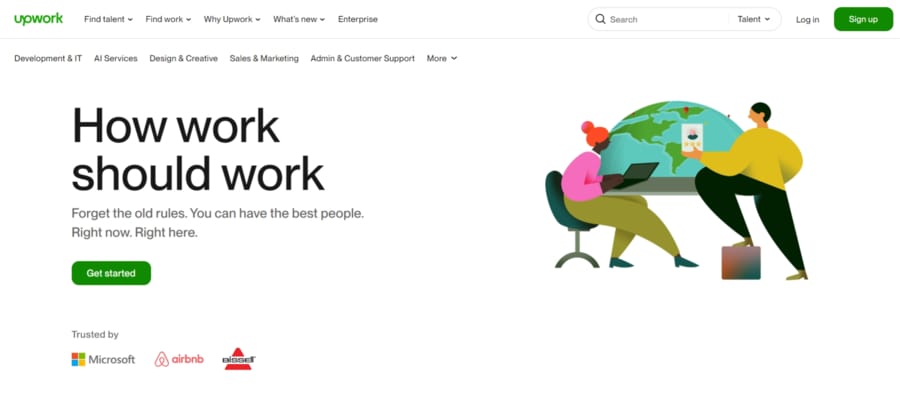
This goes hand-in-hand with the rise of the gig economy, which means people are actively looking for flexible work options while companies are more willing to outsource tasks to freelancers instead of hiring new ones.
Different Types Of eCommerce Websites With Examples
The next classification is based on the type of website eCommerce stores are selling through.
1. Single-Brand Or Vendor-Specific
These online stores stock items from a single individual or manufacturer. This effectively eliminates competition with other brands since the vendor can focus solely on promoting their own products or services.
For instance, the Adidas webpage shows brand-specific clothing, sneakers and accessories.
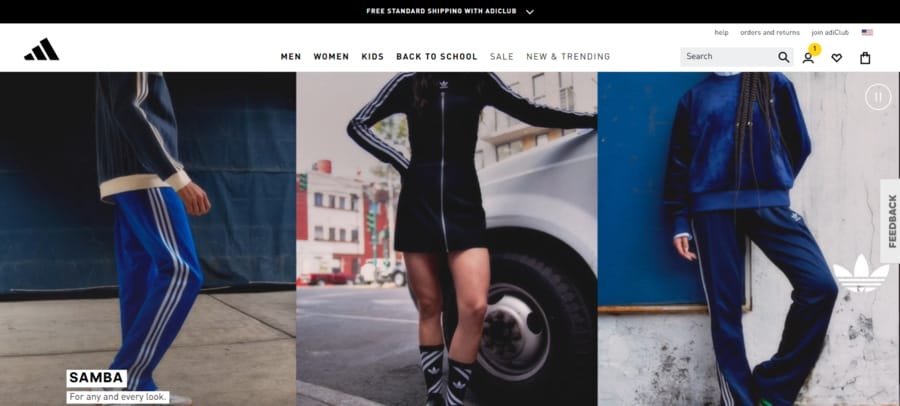
The company has full control over the brand guidelines, price range and the overall user experience.
This website type can be particularly useful for established brands with a loyal customer base since it helps maintain their image and brings them closer to their target audience.
2. Multi-Brands Or Online Retailers
As a more versatile option, online retailers house items from separate vendors. This gives users the luxury of comparing products from different brands, all in one place.
Let’s take Macy’s as an example — in addition to selling Adidas sneakers, the platform has Nike, Asics, Converse, Puma and other footwear.
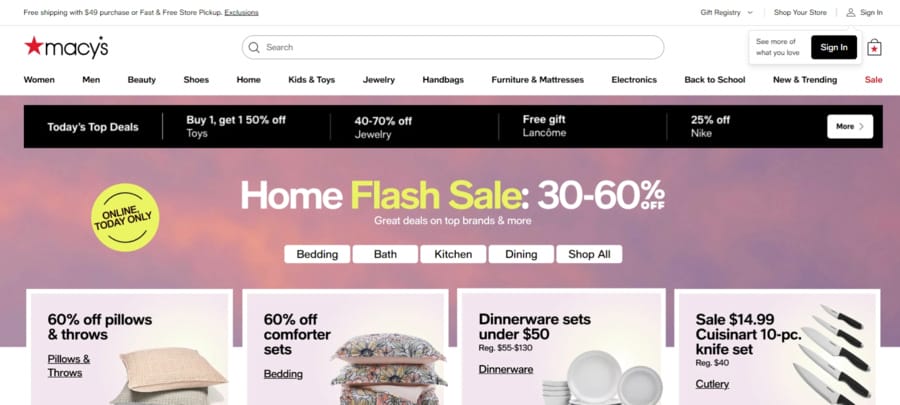
Macy’s has the final say on which items they stock from select vendors and how they’re displayed on the website. They also handle the shipping process once customers place an order.
3. Affiliate Websites
If you don’t want to handle inventory or shipping but still want to generate revenue, you can partner with affiliates to earn commission on product sales.
For instance, New York Times’ Wirecutter offers expert reviews and recommendations for various products. The website contains affiliate links that redirect users to purchase those items from relevant stores.

The platform’s team is a mix of journalists, researchers and scientists, who deliver reasonable advice based on rigorous testing, research and interviewing relevant parties.
Wirecutter is completely transparent about its motives and the commission it receives from sales, which inherently boosts the site’s credibility in the eyes of consumers.
4. Marketplaces
While online retailers stock products from various brands, marketplaces connect buyers and sellers of different backgrounds. This is where the C2C business model is most evident, since people can both offer and search for relevant products.
While Craigslist, Etsy or Airbnb are some of the more notable names, you can also find smaller, niche platforms with the same concept.
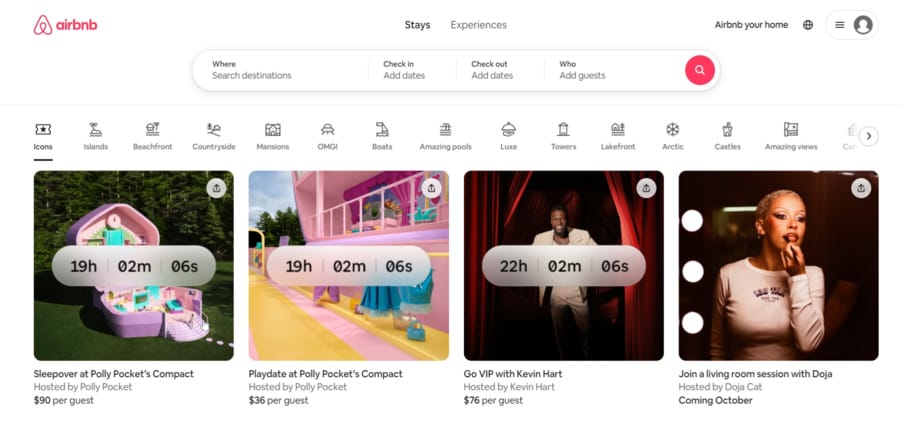
Social media marketplaces are also gaining traction due to their accessible and versatile nature. Platforms like Facebook, Instagram, Pinterest and LinkedIn all have dedicated shopping sections where users can buy or sell goods.
Businesses can tag their products in posts, reels or stories to reach a wider audience and direct them to their online store for purchase.
This also paves the way for social media ads and influencer marketing, which help brands target certain demographics and maximize engagement.
This way, they can build brand awareness and boost sales while connecting with their customers on a more personal level.
Types Of eCommerce Websites By Technology
The latest technological advancements have only fueled people’s need for convenient and hassle-free shopping.
We’re no longer confined to laptops and desktop computers for our everyday purchases. This, in turn, forces companies to conform to the changing market trends and consumer demands.
Mobile Commerce
A whopping 77% of global retail website traffic came from smartphones during the first quarter of 2024.
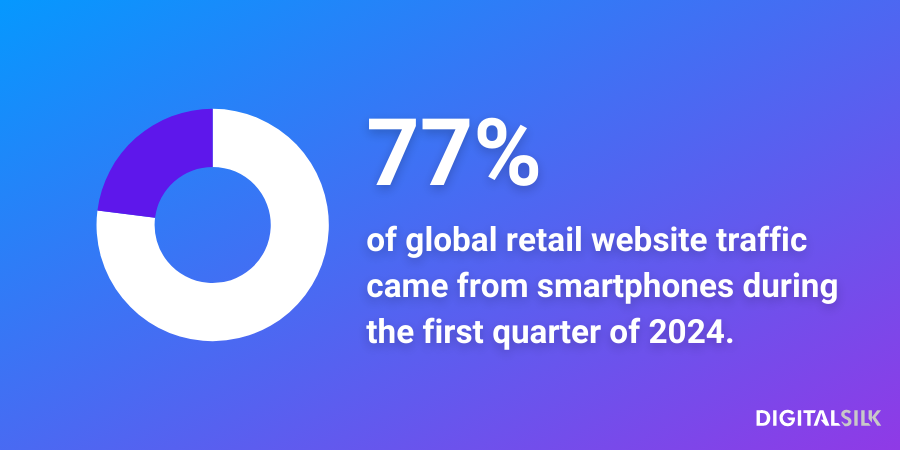
This clearly illustrates the meteoric surge that mobile devices have had in recent years. Users can shop anywhere and at any given time — and they’re not afraid to use this luxury.
This translates to a dramatic shift in the eCommerce landscape. Businesses channel their efforts toward designing mobile-friendly and responsive websites, or even developing respective mobile apps.
The main perks of mobile commerce include secure payments and simplified checkout, easy social media integration and a seamless user experience.
The key to achieving a smooth desktop-to-mobile transition is stripping back your content. Naturally, you can’t fit the same level of information on a smaller screen, so you need to set some priorities.
This involves compressing your images, avoiding large chunks of text, changing button size and placement or using a larger and easily readable font.
Voice Commerce
Voice-activated digital assistants like Amazon’s Alexa, Samsung’s Bixby, Apple’s Siri and Google Assistant are revolutionizing the way we shop.
This technology enables users to add items to their cart and complete transactions without moving a finger.
Take Google Shopping Actions as an example — a nifty tool that lets retailers sell their products on Google’s search engine through voice-enabled searching.
This hands-free approach is the main selling point — people can use natural language commands and speech recognition algorithms to browse e-Store catalogs and authorize payments.
It’s much easier and faster than manually typing out queries, which is a big advantage in today’s fast-paced society.
More importantly, voice commerce makes online shopping more accessible for individuals with visual impairments or limited mobility. It helps them shop independently and easily, contributing to a more inclusive eCommerce space.
Not to mention that it offers a personalized experience — it remembers past searches and user preferences to tailor recommendations.
As the current voice algorithm advances and AI takes on a more prominent role on the digital stage, these assistants are getting better at understanding more complex commands and offering accurate and up-to-date results.
Digital Silk’s eCommerce Example To Inspire Your Design
Digital Silk offers end-to-end eCommerce development, integrations with both mainstream and custom ERP systems and custom hosting solutions that can handle high volumes of transactions and data syncing.
Our client Geissele Automatics is a leading firearms and ammunition manufacturer.
We helped them build a fully customized shop with a modern design, user-friendly interface and seamless integrations with their backend systems.
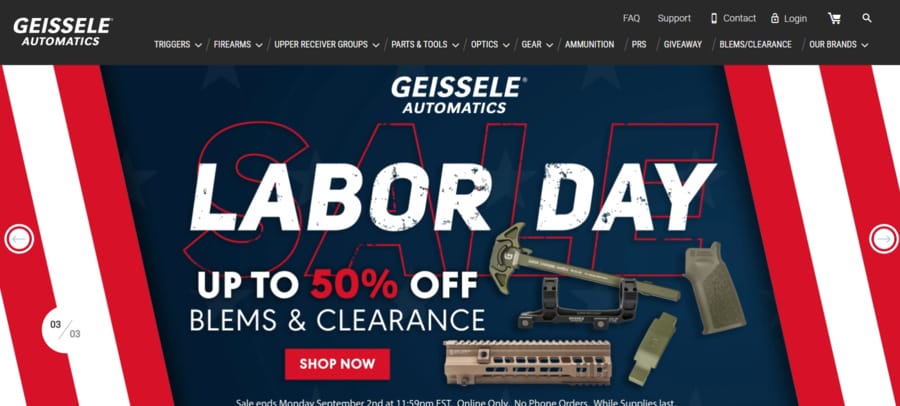
The homepage boasts detailed product categories, featured products, and special offers to entice customers.
The navigation menu features a nifty laser-like dot that hovers above the tab, highlighting the selected item.
Grow Your eCommerce Website With Digital Silk
If you want to design an online store or revitalize your current website, Digital Silk can help you navigate the eCommerce scene.
Our experienced team of digital strategists and web developers create custom e-Stores that foster customer engagement and drive sales.
We keep track of the latest changes in eCommerce tools to deliver optimized eCommerce websites for both Magento and Shopify users.
Digital Silk optimizes conversions by researching current market trends, analyzing consumer behavior and implementing branding strategies that match your business.
As a professional web design agency, we deliver an assortment of solutions to grow your eCommerce store:
- eCommerce Website Development
- Magento Design and Development
- WooCommerce Development
- Shopify Development
- Branding Services and SEO
Throughout our partnership, we treat each project like our own, offer transparent feedback and deliver measurable results through expert guidance.
Contact our team, call us at (800) 206-9413 or fill in the Request a Quote form below to to take the next steps toward building your custom eCommerce website today.
"*" indicates required fields


